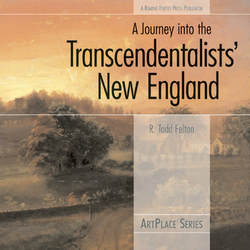Читать книгу A Journey Into the Transcendentalists' New England - R. Todd Felton - Страница 29
На сайте Литреса книга снята с продажи.
Transcendentalist Women
ОглавлениеOne of Transcendentalism’s greatest strengths, as well as a key to its success, was its embrace of progressive social causes, specifically abolition, natives’ rights, and the rights of women. Transcendentalist “feminism” (a term that would not be used until 1895), however, clearly succeeded in ways that the first two causes did not. While there were no blacks or Native Americans in the Transcendentalist circle, there were women—women whose opinions were sought and intellects were respected.
Probably the most visible of the female Transcendentalists was Margaret Fuller. Although unable to attend Harvard—its “women’s annex,” Radcliffe College, wasn’t founded until the end of the century—Fuller did gain the right to use Harvard’s library, the first woman to do so. She was one of a handful of female members of the Transcendental Club, and served as editor of its journal, the Dial, until she handed off the role to Emerson. Later, she became one of the only women of the nineteenth century to serve as a foreign correspondent for an American newspaper, Horace Greeley’s New York Tribune. Her literary works, most notably a translation of Eckerman’s Conversations with Goethe and her magnum opus, Woman in the Nineteenth Century, met with critical acclaim.
Another woman whose Transcendentalist activities helped her break new ground was Elizabeth Palmer Peabody. The first to hold “conversations” for women for profit, the first woman in Boston to be a publisher, the first to open a kindergarten in America, Peabody was endlessly energetic. A driving force in the Boston intellectual scene, she was responsible for hosting, supporting, or initiating many of the Transcendentalists’ activities throughout New England.
Advocacy of women’s rights was not limited to the Transcendentalist women. Almost all the major educational endeavors connected with the Transcendentalists sought to equalize the balance of power between the sexes. One glaring exception was Bronson Alcott’s utopian community, Fruitlands. While the men sat around discussing and philosophizing, the majority of the farm work fell to Abba Alcott and her four girls. Fruitlands failed after only a few months.
In addition to these serious intellectual inquiries, the bookstore hosted romantic events as well. Two weddings took place in the back rooms, where the Peabody family lived. The first was between a relatively unknown but strikingly handsome author from Salem, Nathaniel Hawthorne, and Elizabeth’s equally striking sister, Sophia. The Hawthornes were married in July 1842 by the liberal Unitarian minister James Freeman Clarke. The second marriage was between the middle Peabody sister, Mary, and the educational reformer Horace Mann. Also presided over by Clarke, this ceremony took place in May 1843.
Today the building might still be a lovely place for a small wedding. The books are gone; in 1878 Peabody donated them to the Concord Free Public Library, which still has 415 of the thousand volumes that went into the circulating collection. In their place now are wine glasses and white linen. After hosting a number of retail establishments over the years (and changing its street number from 13), 15 West Street is now home to the West Street Grille, an upscale restaurant where the young and stylish of Boston come to dine and mingle.
Elizabeth Peabody’s bookstore also made its mark in a more public way when she began publishing the Dial there. Evidence suggests that this made her the first woman publisher in Boston, and most likely in all of North America. She also published some of Hawthorne’s early work before he moved to Ticknor and Fields. In 1849 she began publishing a journal of her own, Aesthetic Papers. Although it lasted just one issue, it was particularly notable for publishing an essay by a still relatively unknown writer who had recently returned from a sojourn by a lake. The essay, “Resistance to Civil Government” by Henry David Thoreau, has become one of the best-known works of the period (under its later title, “Civil Disobedience”), and has certainly outlasted the fame of the magazine in which it first appeared.
